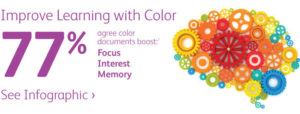 Just when you thought screen penetration was nearing 100% and that digital communication was the best way to reach today’s youth, surprising new research covered by the Washington Post shows that in many cases, students still prefer print.
Just when you thought screen penetration was nearing 100% and that digital communication was the best way to reach today’s youth, surprising new research covered by the Washington Post shows that in many cases, students still prefer print.
Print: Still a Powerful Educational Tool
Studies from such renowned sources as The University of Washington and American Linguist Naomi S. Baron have shown that even millennials, the generation who learned to use a mouse before they learned to use a fork, prefers the printed word to the digital one when it comes to reading and comprehension. Even cash strapped college students are largely reporting buying printed textbooks even when they receive the digital copies for free, a phenomenon that has surprised researchers – but not necessarily teachers.
Study participants repeatedly described distractions and noise as being a major deterrent from reading on screens. They also described a propensity for skimming and resulting problems with comprehension – another tidbit that might surprise some, but certainly not educators.
Print vs. Digital: Why the Story Isn’t Black and White
But applying printed materials in the classroom isn’t enough. To truly engage students, and to give your printed tools an edge over digital, you’ve got to go with color.
When it comes to the effects of color printing, there’s no shortage of data. Thanks to intensive research from Xerox, we know that:
- 77% of students studied say that color improves their focus, interest and memory
- 85% believe that it makes charts and graphs easier to understand
- 77% report that they wish handouts were as colorful as the screens of the devices they use.
Think that’s persuasive?
- 69% of students better understand new ideas when those ideas are presented in color
- 77% say that color helps them remember what they’ve read more easily.
- What’s more, a documented 58% of educators agree that color improves learning and retention.
There’s no question that screens are here to stay, and that they’ve proven a dynamic and effective learning tool. But the research has also shown that print still plays a vital role – and that printing in color may just give digital a run for its money. That’s because printing in color helps to mirror the digital experience, engaging students more effectively, and ultimately improving outcomes.
Want more information on how print can help your students? Visit our K-12 Education site.
Ready made Tweets, click to share with your followers
Tweet: Students choosing printed words over power cords? It’s happening.
Tweet: Color printing in the classroom: more effective than screens?
Tweet: Engage your students – not with screens, but with color.


